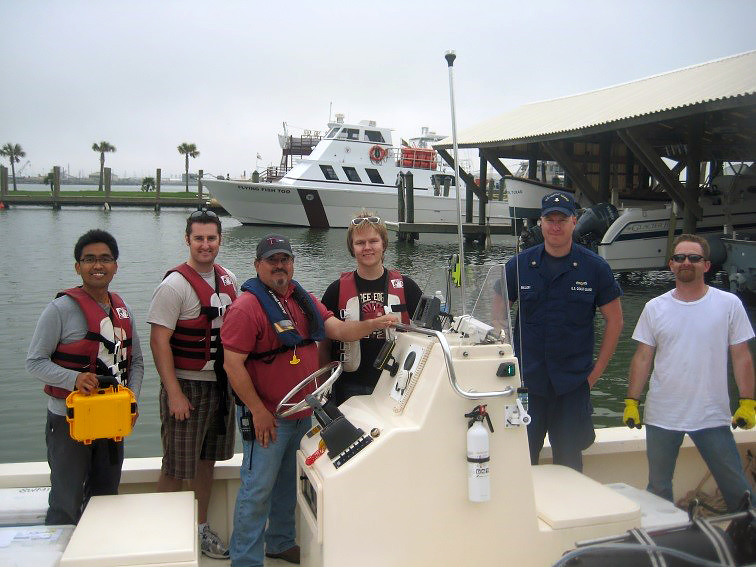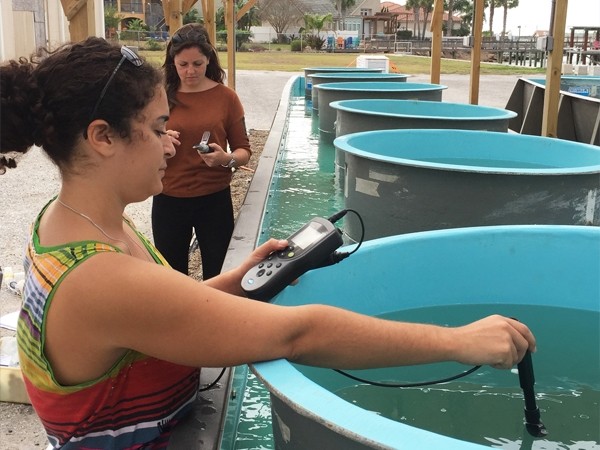There have been two large scale oil spills over the past 4 decades in the Gulf of Mexico. The Ixtoc I spill in 1979 off the coast of Carmen, Mexico released 3.5 million barrels of crude oil into the Gulf, and the Macondo wellhead blowout off the coast of Louisiana, USA in 2010 released 3.19 million barrels of oil into the Gulf. Both of these incidents resulted in scientists coming together to gather the data needed to understand the fate of the oil, the disturbances it caused to the ecosystem, and its impacts on humans. One of the largest drivers of research efforts surrounding the 2010 Deepwater Horizon incident is the Gulf of Mexico Research Initiative (GoMRI). GoMRI-funded research has significantly enhanced our knowledge of Gulf ecosystems and the impacts of oil spills on the Gulf.
It has also identified gaps in our understanding that are leading to new research and insights that will inform society’s response to future oil spills through improved mitigation efforts, refined detection of oil and gas in the environment, more robust spill simulation models, and novel technologies.
 Researchers from the University of Texas Marine Science Institute, Texas Tech University, and Texas A&M-Galveston in addition to a member of the Coast Guard return from sampling the Galveston Bay oil spill. Courtesy Photo.Rapid Responses to Continuing Spill Threats
Researchers from the University of Texas Marine Science Institute, Texas Tech University, and Texas A&M-Galveston in addition to a member of the Coast Guard return from sampling the Galveston Bay oil spill. Courtesy Photo.Rapid Responses to Continuing Spill Threats
Oil spills are a persistent threat to the Gulf of Mexico. Just two years ago, after a cargo ship in the Houston Ship Channel collided with a barge, spilling 168,000 gallons of bunker fuel oil into Galveston Bay, GoMRI scientists were on the scene alongside government and industry workers within days.
The GoMRI Legacy
The GoMRI legacy focuses on creating an overall preparedness for future spills by increasing our knowledge of the Gulf, oil, and dispersants; advancing technology and modeling; training future generations of scientists and engineers; engaging and informing the public and stakeholders; and making all GoMRI data available through online open access.
Importantly, unlike during the era of the Ixtoc I spill, technology now allows scientists to archive and share their data with other researchers. Currently there are 26,000 GB of data stored in the GoMRI Information & Data Cooperative (GRIIDC) public, online data repository with datasets added daily. Such data accessibility was not available decades ago. In many cases, all we have are the publications that resulted from Ixtoc I research, but much of the original data were lost to time.
To date, GoMRI research represents the efforts of 293 institutions from 42 states, Washington D.C., Puerto Rico, and 17 countries. The almost 3,400 GoMRI scientists spread across these institutions collaborate on 242 projects and have created 1,100 unique datasets and counting. GoMRI funding has provided research opportunities for over 2,400 students from high school through post-doctoral studies.
The story of some of these researchers and their important discoveries about petroleum pollution and marine and coastal ecosystems is portrayed in the “Dispatches from the Gulf” documentary produced by Screenscope.

As the GoMRI legacy continues to be written, its scientists forge ahead this summer with a full season of field work to continue to monitor long term impacts of Deepwater Horizon oil and understand oil spill dynamics; including a visit to the Ixtoc I spill site. Here in Port Aransas, UTMSI biologists, chemists and physiologists will examine microscopic creatures in our local water and look at thousands of hours of footage of red drum fish. One of the teams at UTMSI, led by Dr. Ed Buskey, will begin testing within fiberglass tanks which hold around 120 gallons of seawater. They will place these tanks in a temperature controlled water bath. The tanks are specially designed to keep oil, dispersants, and plankton in a reflective environment. Experimental trials carried out in these tanks will provide a better understanding into how various concentrations of crude oil and the use of dispersants affect natural plankton communities in our local waters. Another research team at UTMSI, led by Dr. Andrew Esbaugh, will be putting red drum on a tread mill. That’s right, they have a special water-filled chamber with a propeller that can make the fish swim at specific speeds. While the fish is swimming away, they can measure how oil affects the heart rate and swimming performance. These experiments are just a few examples of how our scientists, here in Port Aransas, are helping the world understand the impact oil spills can have on animals in the ocean both locally and abroad.
Today, on World Oceans Day, we can reflect on the progress GOMRI has made in advancing oil spill research, and subsequently our ability to deal with the ever present threat of oil spills. Due to the groundbreaking research GOMRI has catalyzed, the future of oil spill research and mitigation is getting a bit brighter.
About GoMRI
All research discussed in this article was made possible by grants from The Gulf of Mexico Research Initiative (GoMRI). The GoMRI is a 10-year independent research program established to study the effect, and the potential associated impact, of hydrocarbon releases on the environment and public health, as well as to develop improved spill mitigation, oil detection, characterization and remediation technologies. An independent and academic 20-member Research Board makes the funding and research direction decisions to ensure the intellectual quality, effectiveness and academic independence of the GoMRI research. All research data, findings and publications will be made publicly available. The program was established through a $500 million financial commitment from BP. For more information, visit http://gulfresearchinitiative.org/.









